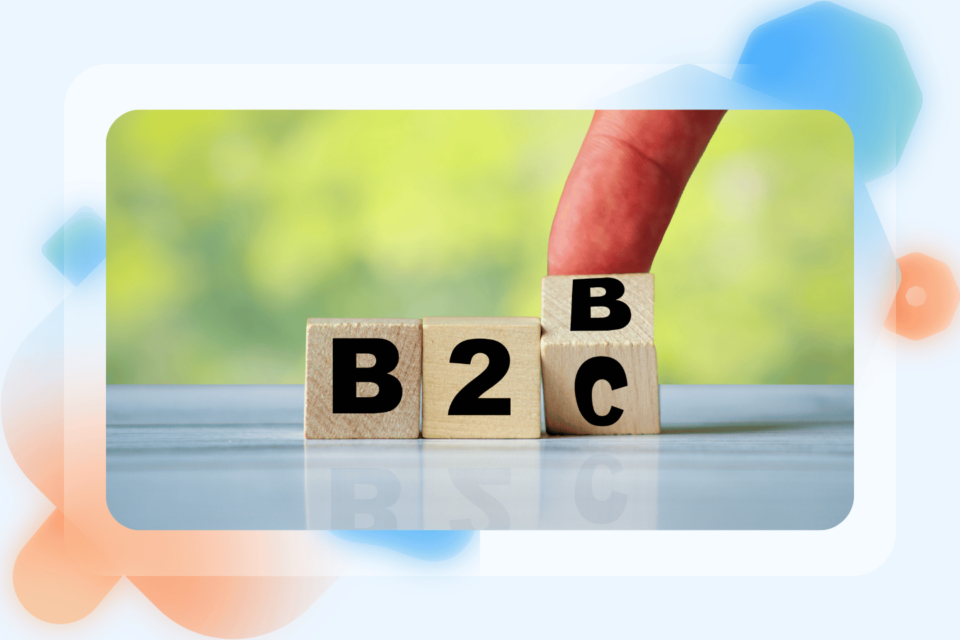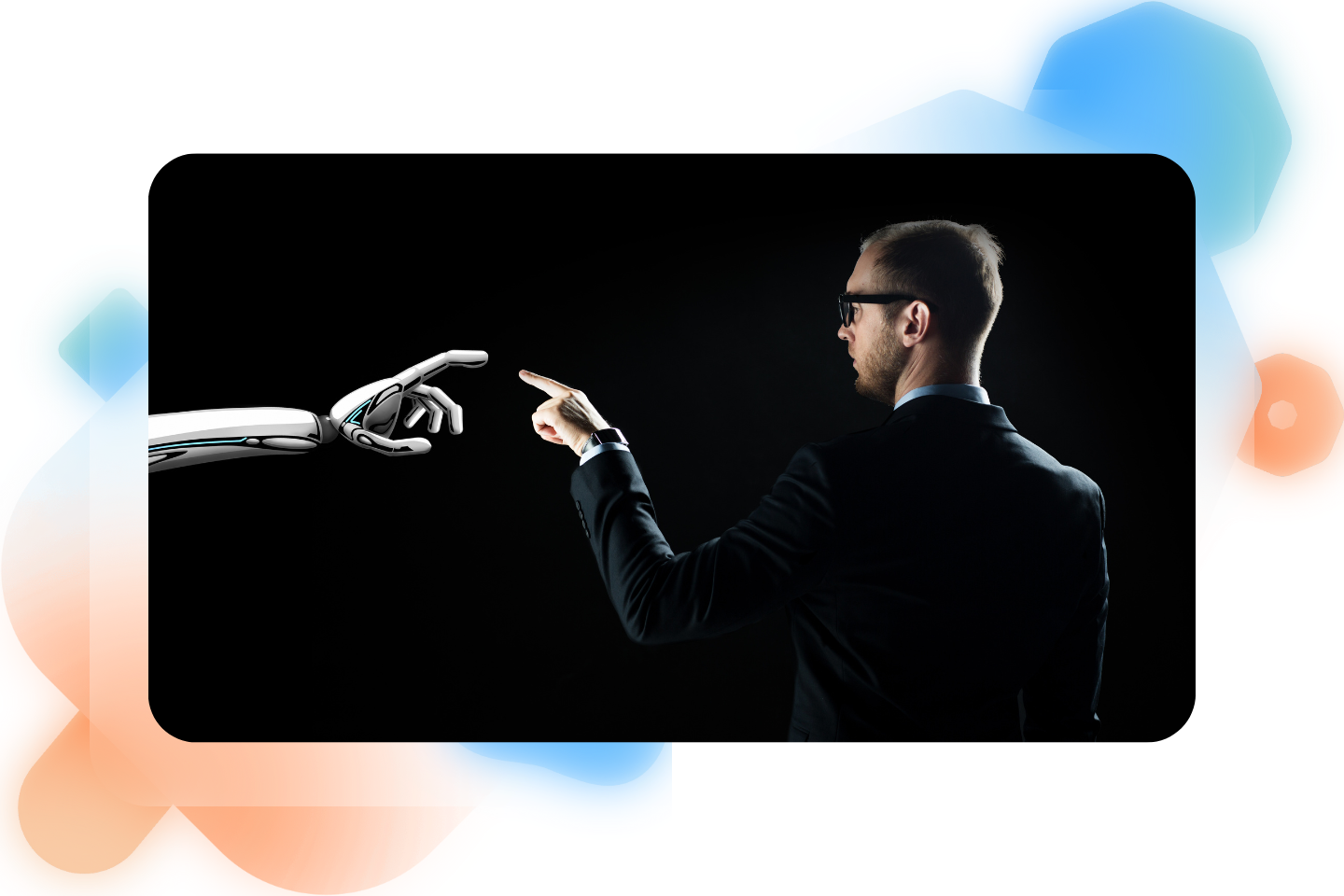In today’s competitive B2B landscape, exceptional customer experience is crucial for success. Effective account management strategies are essential for maintaining strong customer relationships, improving win rates, and providing personalized experiences within a corporate structure.
With more businesses vying for the same customers, providing a seamless digital experience, addressing complex buying processes, and fostering customer loyalty are essential for companies to stand out and generate long-term profits.
Satisfied B2B customers are more likely to recommend your brand to others, which may lead to new business opportunities and an increase in revenue. By providing a seamless digital experience, addressing complex buying processes, and fostering customer loyalty—businesses can differentiate themselves, attract new clients, and drive long-term success.
What’s the difference between B2B and B2C customer experience?

B2B buyers want more than just a product—they want a solution. They seek partners who understand their unique needs, provide tailored solutions, and offer ongoing support and value. Understanding and exceeding customer expectations in B2B customer experience is crucial to succeed in your industry. This means businesses must focus on building relationships and delivering exceptional and consistent customer service.
Businesses, however, must be mindful of their approach as B2B differs from B2C in several key ways. The B2B customer experience focuses more on building complicated, long-term relationships and rational decision-making. On the other hand, the B2C customer experience focuses on simplicity, emotional connections, and individual preferences. Here’s a quick breakdown of the key differences:
Customer relationships
B2B: Customer relationships here are long-term—built on trust and mutual benefit. Understanding and addressing customer churn is crucial for maintaining these strong B2B customer relationships. B2B interactions often involve collaboration between teams from both businesses. This requires effective communication and coordination, so maintaining strong relationships is critical. In fact, it’s been observed that 84% of B2B buyers will more likely choose a vendor that clearly understands their business objectives.
B2C: Customer relationships in this model are typically more transactional and focused on individual purchases. While customer satisfaction and loyalty are still important, the emphasis is often on providing a positive and efficient buying experience.
Decision-making process
B2B: Multiple stakeholders, rational evaluations, complex processes, and lengthy sales cycles are vital factors. Equipping sales teams with real-time insights and a focus on customer needs to enhance the overall customer experience is essential. In other words, businesses must leverage data-driven decision-making to engage with B2B customers and influence their decisions effectively.
B2C: Individuals make decisions based on personal needs, emotions, price, and convenience. Unlike B2B decisions, B2C sales cycles are shorter and often involve impulse purchases. Understanding these differences is crucial for businesses to effectively tailor their marketing and sales strategies.
Personalization and customization
B2B: Businesses focus on understanding customer needs, tailoring solutions, personalizing communication, and continuously improving to offer a customized experience that aligns with the client’s goals, industry, and challenges. A customer-centric approach is crucial in enhancing the B2B customer experience by embedding customer feedback into company culture and prioritizing personalized, positive interactions across all touch points.
B2C: Businesses focus on individual preferences and behaviors, compared to the B2B model, which focuses on organizational needs. Generally, B2C personalization often involves data-driven recommendations and product options based on browsing history, previous purchases, or personal preferences.
Complexity of products/services
B2B: Products and services can be complex due to technical aspects, customization, integration, and multiple stakeholders. Businesses must provide clear information, excellent support, and tailored solutions to ensure the solution meets the client’s unique operational needs.
B2C: Products tend to be simpler and focused on quick transactions. B2C customers often have a more straightforward understanding of the products or services they purchase, and technical factors less influence decision-making.
Emphasis on support and training
B2B: The customer experience significantly emphasizes support, onboarding, and ongoing training and typically involves high-touch customer service. It provides dedicated support teams, comprehensive training, ongoing assistance, knowledge bases, and proactive support to ensure customer satisfaction and build strong relationships. This is also important to ensure clients can use the product or service efficiently, which is critical to long-term success.
B2C: While B2C customer experience also values support, it’s typically less involved, with low-touch customer service being enough to satisfy immediate customer needs. While B2B requires in-depth knowledge transfer and ongoing support, B2C support is generally less extensive, focusing on product manuals and basic guidance. B2C customers expect quick solutions and self-service options like FAQs or chatbots.
Emotional vs. rational decision-making
B2B: While B2B decision–making uses an interplay of emotional and rational factors, it leans more towards the rational. ROI, efficiency, and strategic value are this model’s main decision-making drivers. The customer experience must support this with detailed information and practical solutions.
B2C: Emotional factors often play a more significant role in decision-making than in B2B. While rational factors like price and features are important, emotions like desire, satisfaction, and loyalty can influence purchasing decisions. Consumers may be influenced by brand identity, personal tastes, or how a product makes them feel.
Channels and communication
B2B: Effective communication is essential for building relationships and driving satisfaction, often involving multiple touchpoints over a longer time, with more formal, personalized, and detailed interactions (like phone calls, emails, and meetings). This is to ensure timely responses and provide customized support.
B2C: B2C communication is more straightforward and can happen quickly across channels like websites, social media, email, in-store experiences, and customer support, where convenience and instant responses matter.
Improve your B2B customer experience with these six tips
Remember: customer centricity should be your focus for an exceptional B2B customer experience. From there, you’ll begin to see the importance of gaining a deeper understanding of your customers and how you can best cater to their needs, which is especially important for building B2B relationships.
Here are some tips to ensure your B2B customer experience stands out from the rest:
1. Understand your customers’ journey
To improve your B2B customer experience, it’s essential to understand the journey your customers take from initial awareness of your brand to making a purchase and becoming a loyal customer. Here’s how you can gain valuable insights:
- Map the customer journey: Create a detailed map of the typical steps your B2B customers go through—from their first interaction with your brand to post-purchase support. Creating a customer journey map helps visualize the entire customer experience, identifying customer needs, motivations, and decision-making processes.
- Gather customer data: Collect data on customer interactions, such as website visits, email opens, and social media engagement. Use analytics tools to track customer behavior and identify pain points.
- Conduct customer interviews and surveys: Conduct interviews and surveys to gather qualitative feedback directly from your customers. Ask about their experiences, expectations, and areas for improvement.
- Analyze customer feedback: Review customer feedback from various channels, such as emails, social media, and support tickets. Identify common themes and trends to understand customer concerns and satisfaction levels.
- Consider customer personas: Create detailed customer personas to represent your ideal B2B customer. This will help you better understand their needs, motivations, and challenges. In fact, it’s been observed that 84% of B2B buyers will more likely choose a vendor that clearly understands their business objectives.
2. Get off to a good start—facilitate smooth onboarding
A positive onboarding experience is crucial for creating a successful B2B customer relationship. Here are some tips for facilitating a smooth onboarding process:
- Clear communication: Establish clear communication channels and expectations from the beginning. Provide detailed information about the onboarding process, timelines, and key contacts.
- Personalized onboarding: Tailor the onboarding process to each client’s specific needs and preferences. Consider factors such as industry, company size, and project requirements.
- Dedicated onboarding manager: Assign a dedicated onboarding manager to guide customers through the process and provide support.
- Training and education: Offer comprehensive training and education on your products or services, ensuring customers have the knowledge and skills to use them effectively.
- Proactive communication: Keep customers informed throughout the onboarding process, promptly providing regular updates and addressing any questions or concerns.
- Offer support and assistance: Provide ongoing support and assistance to customers as they implement your solutions.
- Gather feedback: Ask customers for feedback during the onboarding process to identify areas for improvement and ensure a positive experience.
3. Build a proactive customer support system
A proactive customer support system is essential for providing exceptional B2B customer experience. Here are some strategies to implement:
- Anticipate needs: Analyze customer data and trends to identify potential issues or questions before they arise.
- Offer proactive support: Reach out to customers with relevant information, updates, or solutions even before they contact you.
- Personalized support: Tailor your support approach to each customer’s specific needs and preferences.
- Leverage technology: Utilize tools like chatbots, live chat, and ticketing systems to improve response times and provide 24/7 support.
- Measure and analyze: Track customer support metrics to identify improvement areas and measure your support efforts’ effectiveness.
- Empower your support team: Provide your support team with the necessary training, tools, and resources to address customer inquiries and resolve issues effectively.
4. Improve response times with automation and human touch
Quick and effective response times are crucial for providing exceptional customer experiences. Combining automation with a human touch can help businesses achieve this goal:
- Knowledge base: Create a comprehensive knowledge base or FAQ section on your website to provide customers with self-service options
- Chatbots and AI: Implement chatbots or AI-powered virtual assistants to handle routine inquiries and provide immediate responses, reducing wait times.
- Self-service portals: Create comprehensive self-service portals where customers can find answers to common questions and resolve issues independently.
- Automated ticketing systems: Automated ticketing systems track and manage customer inquiries efficiently, ensuring timely responses.
- Dedicated support teams: Ensure your customer support team is adequately staffed and trained to handle complex inquiries and provide personalized assistance.
- Escalation procedures: Establish clear escalation procedures to ensure that higher-level support staff address urgent issues promptly.
- Customer relationship management (CRM) systems: CRM systems track customer interactions, preferences, and history, allowing support agents to provide personalized and relevant assistance.
5. Foster strong relationships with regular communication
Regular communication is essential for building and maintaining strong relationships with B2B customers. Here are some best practices for regularly and effectively staying in touch with your customers:
- Personalize communication: Tailor your messages to each customer’s specific needs and interests. Use their name, reference past purchases, and offer relevant recommendations.
- Consistent frequency: Establish a consistent communication schedule appropriate for your industry and customer preferences. Avoid overwhelming customers with too many messages, but ensure that you stay top of mind.
- Two-way communication: Encourage two-way communication by actively listening to customer feedback and responding promptly to inquiries.
- Provide value: Ensure your communication is valuable and relevant to your customers. Offer helpful tips, industry insights, or exclusive offers.
- Measure effectiveness: Track the effectiveness of your communication efforts to identify what works and what doesn’t. Use analytics to measure engagement rates, open rates, and click-through rates.
6. Create seamless multichannel experiences
Customers expect a seamless experience across multiple channels in today’s digital age. Here’s how businesses can achieve this:
- Consistent branding: Ensure that your branding and messaging are consistent across all channels, from your website and social media to email and in-person interactions. Working with a branding agency can help you maintain this consistency effectively across platforms.
- Integrated systems: Use technology to integrate your various channels and ensure a smooth flow of information. This includes CRM systems, marketing automation tools, and customer support platforms.
- Omnichannel customer service: Provide consistent customer support across all channels, allowing customers to switch between channels without losing context. Understanding customer journeys within an omnichannel approach is crucial to creating seamless and customized experiences.
- Personalized experiences: Use data to personalize customer interactions across all channels, delivering relevant content and offers.
- Mobile optimization: Ensure your website and mobile apps are optimized for a seamless experience on all devices.
- Consistent messaging: Ensure your messaging is consistent across all channels, avoiding confusion or contradictions.
- Measure and analyze: Track customer interactions across all channels to identify areas for improvement and optimize your multichannel strategy.
Key metrics to track for your B2B customer experience

Customer Satisfaction Scores (CSAT)
CSAT measures how satisfied your customers are with a specific interaction or experience. By tracking CSAT over time, businesses can:
- Identify trends: Understand how customer satisfaction is changing and identify areas for improvement.
- Measure the impact of changes: Evaluate the effectiveness of initiatives to improve customer experience.
- Benchmark performance: Compare CSAT scores against industry benchmarks or competitors.
- Make data-driven decisions: Use CSAT data to inform decision-making and prioritize areas for improvement.
- Foster customer loyalty: High CSAT scores often correlate with increased customer loyalty and repeat business.
Net Promoter Score (NPS)
NPS is calculated by asking customers a single question: “On a scale of 0 to 10, how likely are you to recommend [company name] to a friend or colleague?“
You then categorize the responses as follows:
- Promoters (9-10): Highly satisfied Customers who are likely to recommend the company.
- Passives (7-8): Satisfied customers but not necessarily enthusiastic promoters.
- Detractors (0-6): Dissatisfied customers who are unlikely to recommend the company.
NPS is calculated by subtracting the percentage of detractors from the percentage of promoters. This provides a single score that indicates overall customer loyalty and satisfaction.
Key benefits of tracking NPS include:
- Measuring customer loyalty: NPS directly measures customer loyalty and willingness to recommend the company.
- Identifying trends: By tracking NPS over time, businesses can identify customer satisfaction trends and areas for improvement.
- Benchmarking: NPS can be used to benchmark customer satisfaction against industry standards or competitors.
- Driving action: A low NPS score can be a powerful motivator for businesses to take action to improve their customer experience.
Customer Effort Score (CES)
CES measures the perceived effort customers put into interacting with a company. It is typically calculated by asking customers a single question: “On a scale of 1 to 7, how easy was it to get help from our company today?“
A high CES score indicates that customers found it easy to interact with the company and get their needs met. A low CES score suggests that customers encountered difficulties or frustrations.
Key benefits of tracking CES include:
- Identifying pain points: CES can help identify specific areas where customers struggle to interact with the company, such as navigating the website, finding information, or contacting customer support.
- Measuring efficiency: CES can be used to measure the efficiency of customer service processes and identify areas for improvement.
- Predicting customer loyalty: A high CES score often correlates with higher customer satisfaction and loyalty.
- Driving action: A low CES score can be a powerful motivator for businesses to take action to improve their customer experience.
Build strong customer relationships and long-lasting loyalty with your B2B customer experience

Understanding the difference between B2B and B2C customer experiences is crucial for businesses to tailor their strategies effectively. While both share the goal of customer satisfaction, their nuances impact marketing, sales, and customer service approaches.
To improve the B2B customer experience, focus on understanding your customers’ journey, facilitating smooth onboarding, building a proactive support system, improving response times, fostering strong relationships, and creating seamless multichannel experiences. By implementing these strategies, you can differentiate your business, build loyalty, and drive long-term success.
However, exceptional customer relationship-building starts with your customer support systems. Contact us today and start leveling up your customer support for a more solid B2B customer experience.




